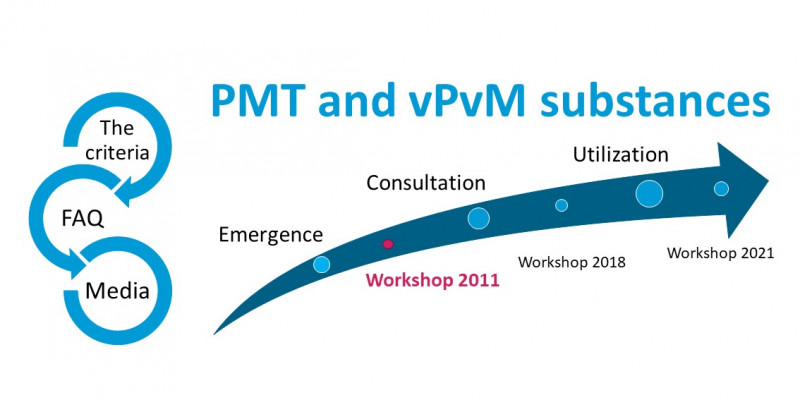<– go back: Emergence (2009 – 2015) of the PMT/vPvM criteria | –> go forward: Public Consultation (2016 – 2019) on the PMT/vPvM criteria
To begin the workshop, the EU´s chemical legislation REACH (allocation of roles, tasks and regulatory instruments) was presented and possible strategies and criteria for the identification of raw water relevant substances were shown. The potential for spreading and distribution after emission into the environment was discussed. The discussion was complemented by presentations on known chemicals registered under REACH that are found in groundwater, surface water and drinking water, as well as methods and problems related to their analysis. This is commonly referred to as the “analytical gap” of mobile substances. In the final workshop discussion, the objectives, possibilities, limitations and necessity of protecting raw water and drinking water from anthropogenic contamination were pointed out.
The most important results from the workshop were that the basic principles and mechanisms of REACH (self-responsibility of the companies) are still not sufficiently known within the water sector. All participants agreed that a prediction and assessment to identify chemicals that are relevant for raw water, based on intrinsic substance properties and uses, is also necessary within the scope of REACH. Participants also agreed that waiting for monitoring data as proof of contamination is not protective of the sources of our drinking water. The interest in a cooperation between the German stakeholders within the scope REACH was expressed by representatives of authorities, water suppliers and water research institutes.
All workshop documents are available only in German.
<– go back: Emergence (2009 – 2015) of the PMT/vPvM criteria | –> go forward: Public Consultation (2016 – 2019) on the PMT/vPvM criteria
Read the full story related to the development of the PMT/vPvM criteria under the EU´s chemical legislation REACH to identify PMT/vPvM substances: (01) –> Introduction to PMT/vPvM substances, (02) –> Emergence (2009 – 2015) of the PMT/vPvM criteria, (03) –> First PMT Workshop 2011 (04) –> Public Consultation (2016 – 2019) on the PMT/vPvM criteria, (05) –> Second PMT Workshop 2018, (06) –> Utilization (2019 – ongoing) of the PMT/vPvM criteria, (07) –> Third PMT Workshop 2021, (08) –> Media coverage and dissemination, (09) –> Frequently Asked Question (FAQ), (10) –> The final PMT/vPvM criteria
 Click to enlarge
Click to enlarge
